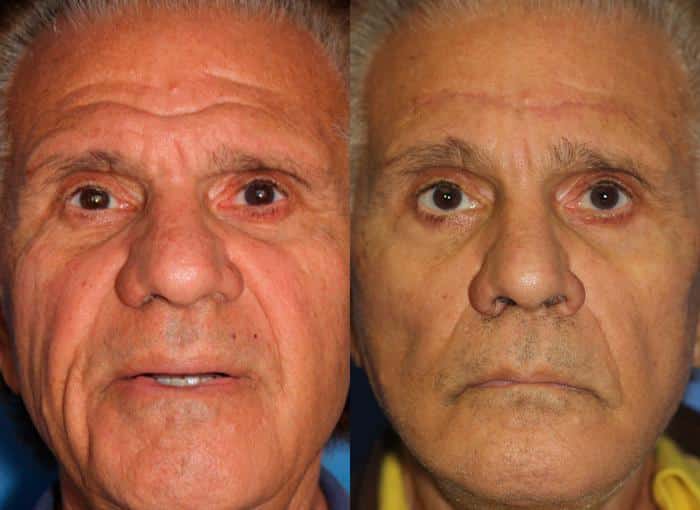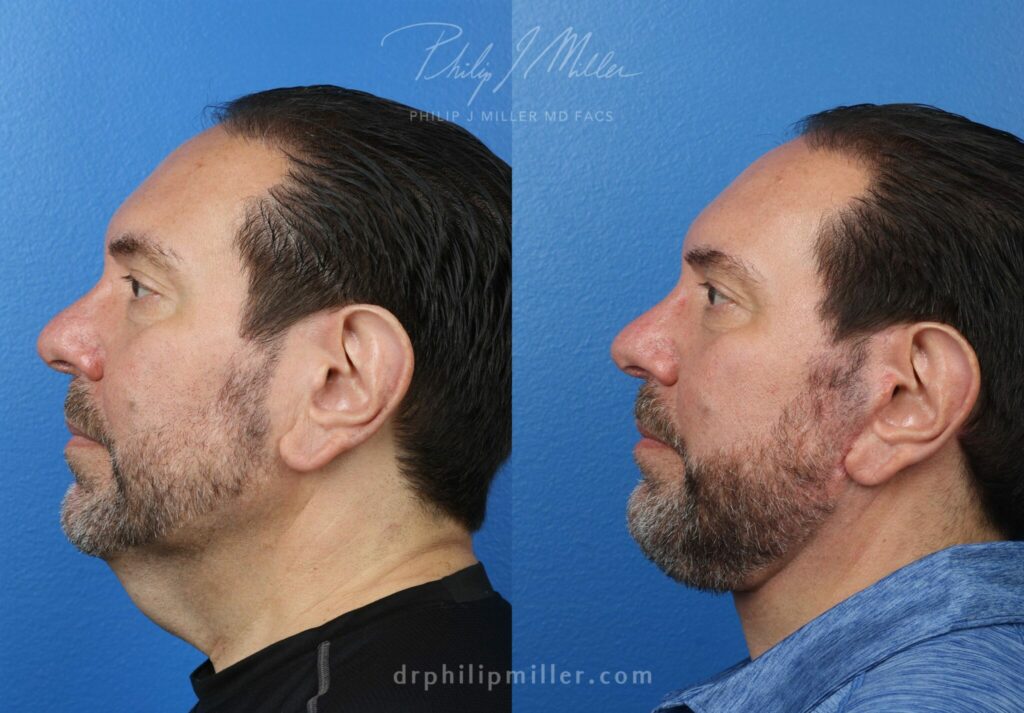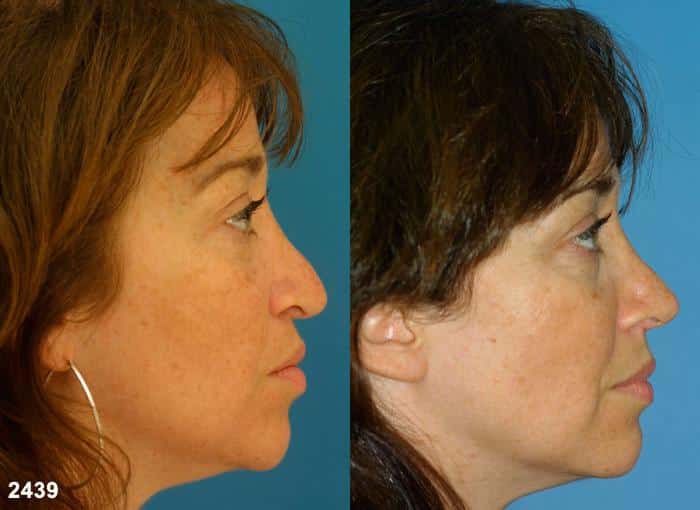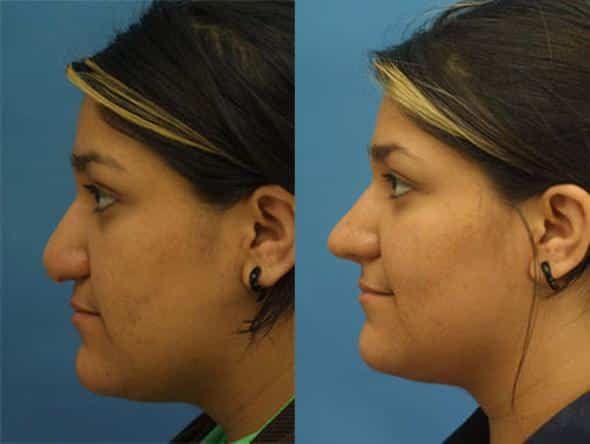6 Facts About Male Facelift You Didn’t Know
More men are now defying the aging process with cosmetic intervention, and the number of men seeking facelift procedures has drastically risen in the last few years.
While all facelifts are tailored to address a unique patient’s needs and goals, facelift surgery for men requires a different approach.
Here are 6 facts that make a male facelift unique:
1. Male Facelifts Occur More Often than You Think
Although women still represent the majority of plastic surgery patients by far, men are steadily increasing the number of procedures they want to maintain their youthfully masculine appearance.
According to the Aesthetic Society’s annual Aesthetic Plastic Surgery Statistics, following a year in which many practices closed temporarily and reduced hours, plastic surgery surged in 2021. Surgical procedures increased by 54%, and the average plastic surgeon performed 320 surgical procedures in 2021, compared with 220 in 2020.
Men, aged 36-50, comprised 40% of male patients who underwent a surgical procedure, with 5,061 males undergoing a facelift in 2021.
2. Male Facelifts Have Different Goals
While both men and women desire to stop the clock on aging, the dynamics of their facelift will have key differences. Women often get a facelift to eliminate deep lines and wrinkles around the cheeks, as well as sagging skin in the neck. While they want to look younger, they also want to maintain a feminine appearance and an aesthetically-pleasing heart shape to the face with well-defined cheeks and a slim, contoured jawline.
The opposite is true for men. Although they also want a facelift to address noticeable wrinkles around the mouth and nose, or sagging skin on the cheeks and jawline, they desire to have a more masculine or “rugged” appearance. They want their facelift to create a strong, chiseled, and defined jawline – without the loose folds on their neck that they often complain make it difficult for them to properly shave.

No two people are the same. The facelift procedure, whether for a male or female patient, will be customized to focus on the unique problem areas and desired results of each individual.
3. Male Skin Needs to be Treated Differently
Anatomy differs between men and women, and this includes skin structure. A man’s facial skin is generally thicker and oilier compared to a woman’s skin.
Men have stronger connective tissues, and they may not experience visible signs of aging for much longer. However, it is the thickness and heartiness of their skin that make their necks and jawline particularly vulnerable to folds and crepey skin.
A facial plastic surgeon performing a male facelift will need to exercise care to avoid pulling skin too tight, as this can result in a facelift with an overly done or pulled appearance.
Men also have more facial hair than women, and this means having more hair follicles that rely on blood supply to grow. Since male skin is also more vascular and will demand more blood supply, men are more susceptible to post-surgery bleeding, which is a factor facial plastic surgeons must take into consideration during and after a facelift on a male patient.
4. A Male Facelift Requires Different Incision Placement
Compared to women, men have shorter hair and hairlines that tend to recede with age. Surgeons may make the incisions at the spot where the ear connects with the head or under the chin, where they are less noticeable or can be hidden in the natural folds of the skin.
Surgeons will need to watch areas of the skin where facial hair grows because they would not want to shift skin with hair follicles to another area where hair does not typically grow. For instance, if skin with hair follicles is lifted and placed higher on the face, the patient might need to start shaving in that area.
5. Scarring Can be a Bigger Concern with the Male Facelift
Surgeons may need to modify incision placement on male patients who are bald or losing hair to keep scars hidden. For patients who don’t have hair to camouflage scarring, incisions are shortened and placed higher up along the ear. Incision placement has to be precise and should still enable the surgeon to have adequate access to underlying tissues while avoiding tension on any stitches and keeping scars discreet. The surgeon’s advanced skill and technique are required to ensure minimal scarring when performing facelifts for males.
6. Men Don’t Have to Stop at a Facelift
The facelift is a comprehensive anti-aging procedure that can produce dramatic results. Pairing a facelift with one or more other cosmetic procedures can produce even better results. Men are discovering that adding treatments to their facelift can produce an optimal outcome for them and when procedures are performed together, this approach does not impact the amount of time taken from work and other activities.
Male facelifts are often combined with a neck lift. The incision made under the chin for a neck lift allows the surgeon to also remove excess fat and tighten tissues and muscles in this area to enhance a man’s neck and jawline. When the face and neck are surgically rejuvenated together, the results will look more natural as well.

Other patients may find eyelid surgery, rhinoplasty, or laser skin resurfacing can help them achieve all of their aesthetic goals.
What exact surgical and non-surgical procedures will pair well with your facelift? Come in for a consultation to get a customized procedure plan that will help you achieve your aesthetic goals.
Considering a Male Facelift in New York? Consider Dr. Philip Miller for All Your Cosmetic Needs
Philip J. Miller, MD, FACS, is a double board-certified facial plastic surgeon who has extensive experience with plastic surgery procedures for men as well as women. He pioneered the NatraLook methodology for his cosmetic procedures for the face, which is a specialized consultation process through which Dr. Miller will evaluate your facial features and listen to your specific concerns. NatraLook creates a collaborative environment that ensures a unified vision for optimal results and the most natural outcome possible.
To learn more about facelifts for men, view male facelift before and after photos, or determine the cost of a male facelift, contact Dr. Miller in Manhattan, New York to schedule a consultation today.
Tip Drop After Rhinoplasty
Tip drop is a potential consequence after rhinoplasty. While the nose changes over the first year after this surgery, some patients may find that they require revision procedures to address tip drop that does not resolve during the healing process.
Choosing to undergo plastic surgery is not a choice that you should make lightly. Rhinoplasty is no exception. Every invasive procedure has risks, but choosing an experienced facial plastic surgeon can help lessen the complications.
What is Tip Drop?
Tip drop is one complication that may occur after rhinoplasty. You may notice that the tip of your nose starts to look round. In other cases, you may see your nose has developed a new bump due to your nose tip being disproportionately lower than your bridge.
While your tip will drop slightly as your nose heals, a round nasal tip may indicate that a “dropped tip” has occurred.

Is it Common for a Tip to Drop After Rhinoplasty?
Will the tip of your nose drop after rhinoplasty? It might appear that way. This illusion is expected as the swelling goes down and your nose begins to heal. As the incision starts to contract, the tissue above your nose tip will rise, which causes your tip to look like it dropped.
Another reason your tip will drop after your nose job is due to gravity. Gravity naturally pulls your nose tip downward. If your remaining cartilage is too weak to hold your tip in position and overcome gravity’s tug, your tip may drop.
These are both predictable and preventable. Your plastic surgeon should consider gravity’s pull, the strength of your cartilage, and how much your incisions will contract before performing your rhinoplasty.
A significant tip drop is a common complication of rhinoplasty, especially if your surgeon is inexperienced. Therefore, finding an experienced surgeon is essential to diminish the chance of tip drop.
How Much Will My Tip Drop After Rhinoplasty?
Your tip should drop between five and ten degrees after rhinoplasty. This drop is due to gravitational pull and your incisions tightening. Any drop that is greater than that means there may have been a surgical complication.
When Will My Tip Drop After Rhinoplasty?
After rhinoplasty, your tip should drop over the next six weeks as swelling reduces and your incisions contract. However, it can sometimes take up to a year to see the full effect of your nose surgery. You likely won’t know if there were complications during your rhinoplasty until a year has passed.

What if My Tip Drops Too Much?
If your tip drops too much after your nose surgery, you may need a revision rhinoplasty. Surgical errors, outdated techniques, or recovery complications could be reasons your nose tip dropped too much. These revision nose jobs occur about one year after the initial surgery to ensure all post-surgical swelling is gone.
During revision rhinoplasty, your surgeon may need to place a graft to achieve your desired result. The amount of tip drop will affect the type of graft your surgeon will need to place. It is critical to choose a board-certified facial plastic surgeon with extensive experience and expertise in revision techniques, as revision rhinoplasty is typically even more complex than the initial procedure.
Reduce Rhinoplasty Complications by Choosing a Leading Expert in Rhinoplasty
Whether you are undergoing a rhinoplasty because you’re unhappy with the size or shape of your nose or due to trauma, finding the right surgeon is essential. The right surgeon can ensure the procedure is done the first time correctly and that you’ll be pleased with your results.
Regardless of your reason for rhinoplasty, Dr. Philip Miller, MD, FACS, should be your number one choice. Dr. Miller is a double-board certified plastic surgeon serving Manhattan, New York, and New Orleans, Louisiana.
He has honed his unique approach to facial surgery over decades. He works with you in a caring, patient-focused environment. Dr. Miller utilizes the NatraLook process, creating a collaborative treatment where your concerns are valued, your confidence is enriched, and your natural aesthetic beauty is enhanced.
Schedule your consultation with Dr. Miller and his highly-trained team by contacting our Manhattan office. Our acclaimed team is proud to offer customized procedures to make your dream nose a reality.